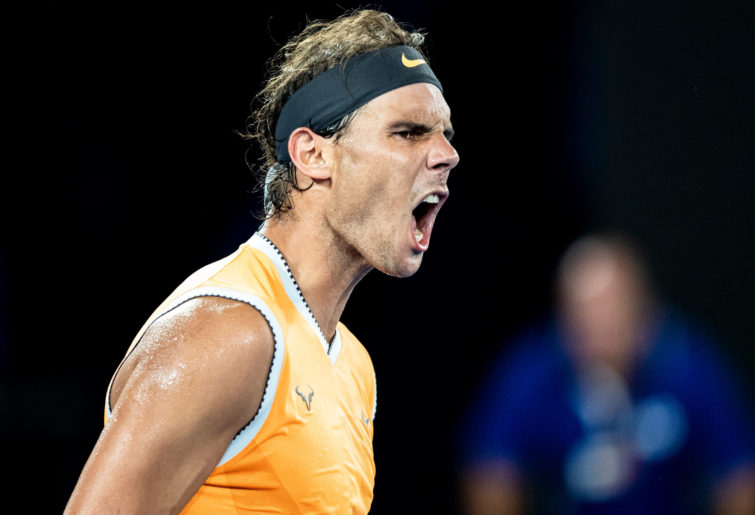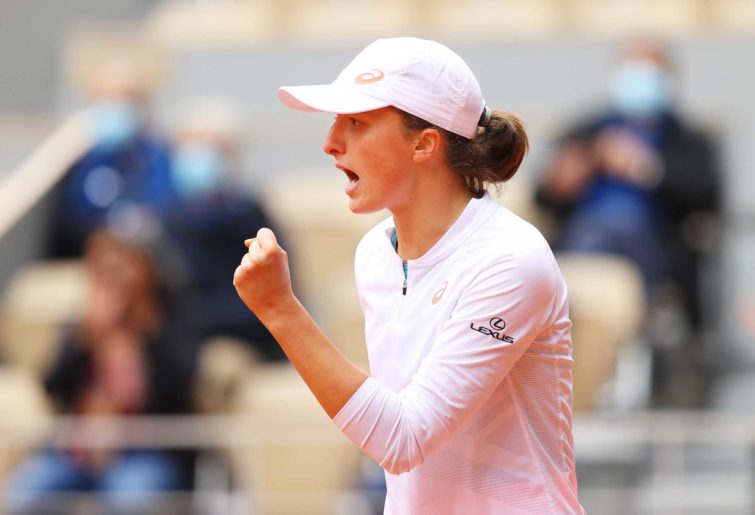Demon slays the King: de Minaur savours 'once in a lifetime' moment after knocking off Nadal on clay
Rafael Nadal has hailed the brilliance of Alex de Minaur, calling him "a great player" after the Australian forced the Spanish legend to say…
Opinion
The rescheduled French Open is over for another year – but in truth we’ll only have to wait seven-and-a-half months for the 2021 tournament to take place.
Nonetheless, while we saw an all-too-familiar men’s champion, in the upset-ravaged women’s draw we saw a brand new French Open champion – and the second female major champion born this century.
Once again, Rafael Nadal is the king of Roland Garros after claiming his 13th title at the tournament, his fourth without dropping a set (after 2008, 2010 and 2017), and his 20th major men’s singles title overall.
In his 13th championship match on the clay courts of Paris, the Spaniard handed Novak Djokovic his most lopsided defeat in a major final, winning 6-0, 6-2, 7-5 to cement himself as not just the greatest clay court player of our generation, but also the greatest of all time.
The 34-year-old committed only two unforced errors in the first set as he inflicted a bagel on the Serb, being only the third player (after Marat Safin and Dominic Thiem) in Grand Slam history to do so.
He proceeded to dominate the remainder of the match, taking the second set 6-2, before being challenged as 33-year-old Djokovic threatened to force a fourth set.

Rafael Nadal equalled Roger Federer’s grand slam record. (Fred Lee/Getty Images)
Nadal broke in the eleventh game after Djokovic double-faulted to drop serve, leaving the Spaniard to serve out the match, sealing his 13th French Open title and record-equalling 20th major men’s singles title with an ace on championship point.
By winning, the 34-year-old also brought up his 100th match victory at Roland Garros (becoming just the second man after Roger Federer to win 100 matches at any major tournament), and his 999th career match victory out of 1,200 career matches.
This means that the next match he plays, which will be his 1,201st match, he will have the chance to bring up 1,000 career match victories, which would see him join only Federer in such company.
The Spaniard also became the oldest man since 1972 to win the French Open, and set a record for the largest gap between his first and most recent major title, having just turned 19 when he won the tournament on his debut in 2005.
His match record at Roland Garros now reads 100 wins against just two losses – the losses being against Robin Soderling in 2009, and Novak Djokovic in 2015. He was also forced to withdraw mid-tournament in 2016 due to a wrist injury.
Drawing level with Federer on 20 major men’s singles titles has now created a subplot for what promises to be an intriguing 2021 Grand Slam tennis season.
With the assumption that Federer returns at Melbourne Park in January, it is possible that both men could face off in the championship match, which would be historic for so many reasons, not least of which would be that whoever wins will claim his 21st major singles title.
Men’s championship result
[2] Rafael Nadal (ESP) defeated [1] Novak Djokovic (SRB) 6-0, 6-2, 7-5.
While Nadal continues to break all sorts of records in the men’s game, in the women’s draw we saw a new champion for the fifth consecutive year, and a second major champion born this century emerge.
Poland’s Iga Swiatek succeeded where the likes of Agnieszka Radwanska and Jerzy Janowicz couldn’t, becoming the first player from her country to win a Grand Slam singles title with a surprisingly dominant victory over fourth seed Sofia Kenin.
Entering the championship match on the back of a stunning run that included defeating last year’s finalist, Marketa Vondrousova, former Wimbledon finalist Eugenie Bouchard and 2018 champion Simona Halep, Swiatek had nothing to lose facing Kenin, and it showed.

Iga Swiatek of Poland (Photo by Julian Finney/Getty Images)
The Polish teenager won the first set 6-4, and after Kenin broke to start the second set, Swiatek broke back immediately, setting off a run of six straight games which would take her to a straight-sets victory.
Swiatek, who was born in 2001, became the tournament’s youngest women’s champion since Monica Seles in 1992, and the youngest of any gender since, as mentioned above, Rafael Nadal won his first title in 2005.
Further, she became the first woman to win the title without dropping a set since Justine Henin in 2007, and the 28 games she dropped were the fewest since Steffi Graf lost just 20 games in her run to the 1988 title (which included double-bagelling Natalia Zvereva in the championship match).
Kenin, on the other hand, missed her chance to become the first woman since Angelique Kerber to win multiple major titles in the same year, the 21-year-old having won the Australian Open in February before the coronavirus pandemic struck.
Nonetheless, she did very well to reach the summit match in Paris after suffering the humiliation of a double-bagel loss at the hands of Victoria Azarenka in Rome shortly after the US Open.
Her run to the final included defeating seventh seed Petra Kvitova – the only seed she faced throughout the tournament – in the semi-finals. It was one of only two lead-up matches she won in straight sets, with the four three-set matches she played clearly taking its toll.
Women’s championship result
Iga Swiatek (POL) defeated [4] Sofia Kenin (USA) 6-4, 6-1.
As a result of the ongoing COVID-19 pandemic, the French Open, which is normally held in May-June, was rescheduled to September-October and tournament organisers only allowed a maximum of 1,000 spectators into the grounds per day.
This came after US Open tournament organisers locked hundreds of thousands of tennis fans out of Flushing Meadows for the first time last month, with all matches being played behind closed doors.
It means that this year’s French Open champions will only hold their titles for seven-and-a-half months, with the tournament expected to revert back to its traditional May-June slot next year.
Nonetheless, Rafael Nadal and Iga Swiatek leave the grounds of Roland Garros as well-deserved champions, and it will take more than an almighty effort to knock the former off his perch in 2021, especially with the lure of a potential 21st (or even 22nd) major title on the horizon.
And that wraps up what has been, to say the least, the most strangest Grand Slam season yet, which saw the French Open rescheduled, Wimbledon cancelled for the first time since World War II, and the US Open held without fans on site at Flushing Meadows.
All going to plan, the Australian Open will be the next major, scheduled for 18-31 January 2021. While unlikely, there is the chance that the tournament, like this year’s US Open, may be played behind closed doors if the COVID-19 situation in Victoria does not improve by then.
However, the second wave of coronavirus cases in Victoria is continuing to pass by, with an average of less than ten cases being recorded in the past fortnight, thus giving hope for officials that a crowd may be able to attend next year’s Open.
Whatever the case, it is unlikely that the 2021 Australian Open will break the record attendance, which was set this year with 812,174 spectators flowing through the gates at Melbourne Park, just as the coronavirus as we know it now was in its infancy.